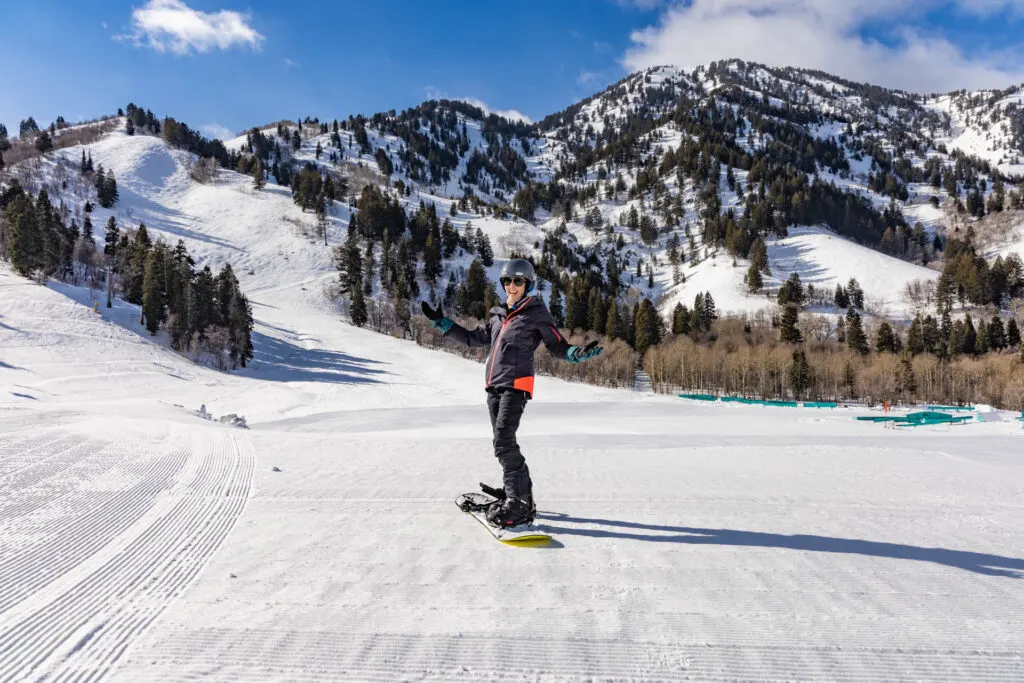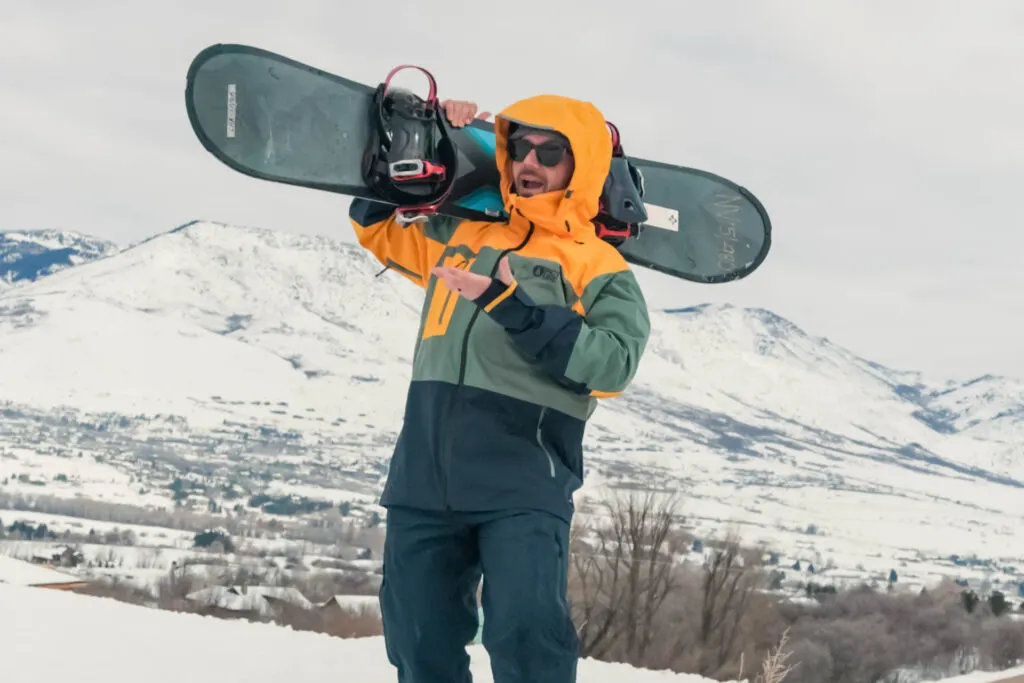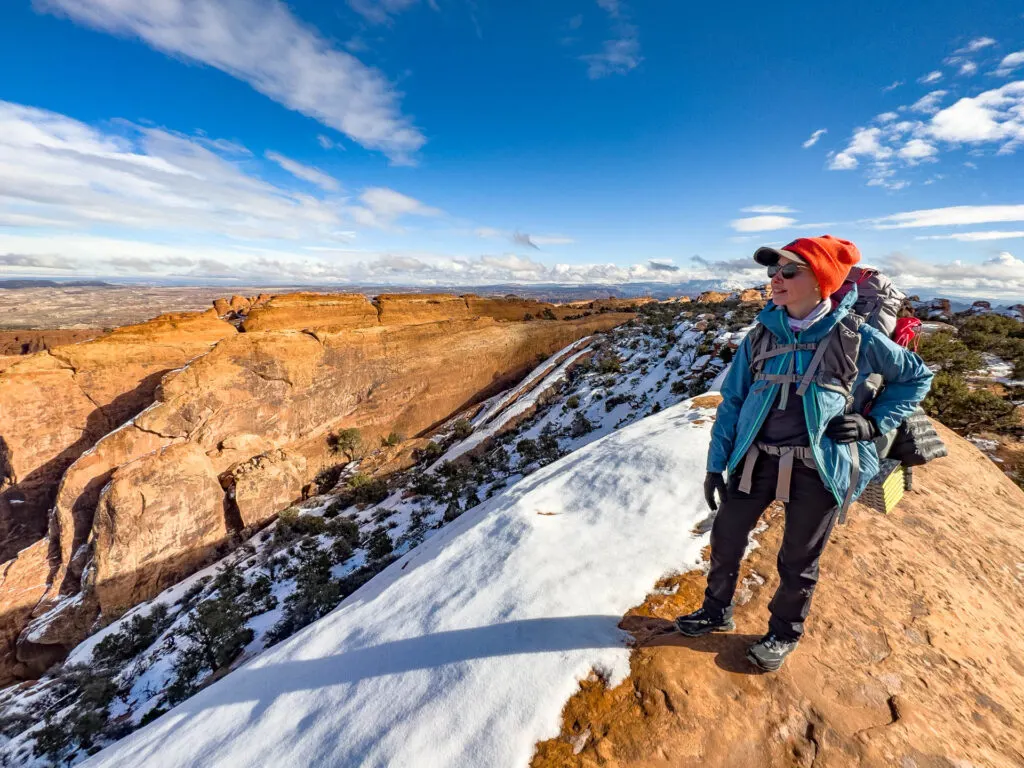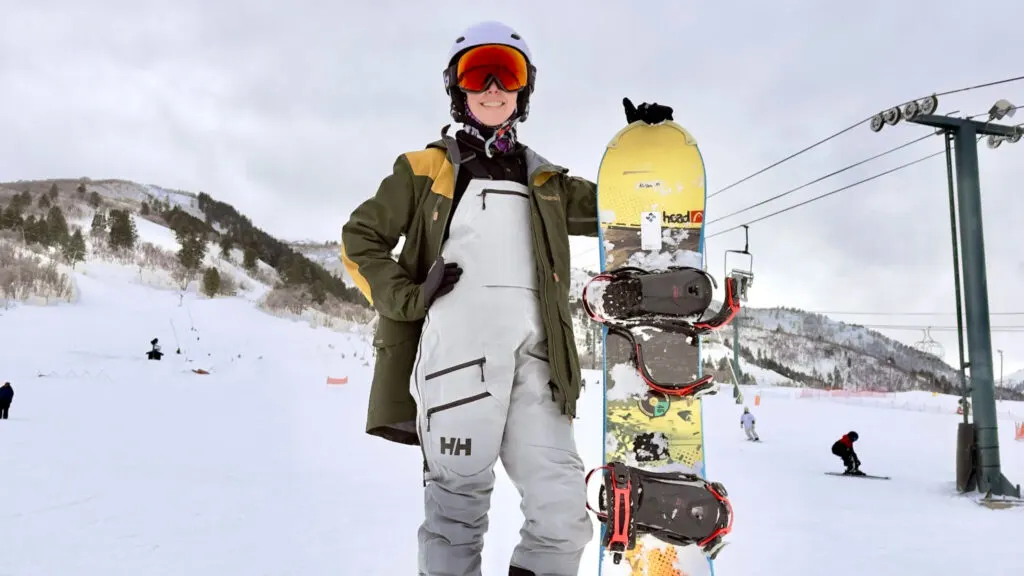The Best Deals on Camping, Backpacking and Outdoor Gear [June 2025]
It’s a debate as old as time itself (ok, maybe just as old as modern DWR technology, but still, the debate rages): Shell vs insulated ski jacket. Which is better when it comes to winter sports? An insulated ski jacket? Or a non-insulated shell jacket?
If you’re sitting there with a confused look on your face thinking, uhh…what the heck is even the difference? Lemme break it down for you:
- An insulated ski jacket–or you might just call it a ski jacket–is just what it sounds like: an outer layer of clothing that’s probably waterproof–or at least water resistant–and lined with insulation, anywhere from just a bit to a whole stinkin’ lot. These jackets tend to be warm enough that you don’t have to fuss with all a bunch of layers underneath; usually just a long-sleeve baselayer will do. These tend to be what you see most often at ski resorts and sledding hills.
- On the flip side, a shell jacket–or shell pants–have no insulation. It’s just one visible layer of durable material (sometimes with a thin liner material on the inside) that’s waterproof. These types of jackets aren’t as warm–though they do block wind and rain particularly well–but they’re way more lightweight and packable. Shells keep out the elements and tend to be more breathable and versatile in more types of conditions, but do require that you dress in layers under the shell since, you know, it’s not gonna be very warm. (Not sure what layering is all about? Read on.)
So which one is better? Well, I’ve got bad news for ya. Like most outdoor gear- and clothing-related debates, it depends. Not what you wanted to hear, I know, but hear me out: Whether a shell jacket or an insulated jacket is the best choice depends on you and what kind of outdoor shenanigans you get up to on the regular. But to set the scene and give some context, let’s start with a brief discussion about layering for outdoor activities.

Intro to Layering
For a full breakdown on why it’s so important to dress in layers and how to do it properly, check out our complete guide to layering. But here’s the shortened version: Essentially, you dress in layers so that as you work hard and your body heats up, you can remove layers like jackets or fleeces so you don’t get too sweaty. Which is important because sweat is what makes you super cold when you stop working hard.
And when you do stop to rest is when you want to have those layers handy to put back ON so you don’t get cold the second you stop moving. Basically, dressing in layers helps regulate your body temperature and actively managing those layers keeps you from getting too hot and sweaty or too cold. The harder you’re working when playing outside (think backpacking, hiking, or cross-country skiing), the more important layers are.
Also important to remember: and layers you remove when participating in these activities you’ll have to carry once you take them off!
So let’s move on to breaking down the pros and cons of each type of jacket and what sort of activities they’re for.

Insulated Ski Jacket: For Cold Weather and Non-Aerobic Activities
Many people instantly gravitate toward insulated ski jackets for one reason: they’re cozy and warm and when you’re thinking about spending a full day downhill skiing or running errands around town on a frigid day, all you typically want is a fluffy, cozy layer that’s going to keep you warm. But there are pros and cons to this approach.
Pros:
- In really cold temperatures, an insulated jacket will keep you warm with fewer laters.
- They’re great for throwing on and getting out the door quickly.
- If you’re out and about on the town with friends, it’s easier to remove one jacket when sitting down for dinner or drinks than a shell and three additional layers.
Cons:
- In warmer conditions, if you’re not dressed in layers you’re more likely to be too hot or too cold and there’s not much you can do about it.
- Insulated ski jacketts are heavy, so if you do have to take it off, it’s going to be bulky and heavy in your pack.
Our Favorite Insulated Ski Jackets:
If you’re a downhill powder hound who regularly carves fresh powder in super cold conditions, check out these sustainable insulated ski jackets:
- Picture Organic Clothing Track Jacket (circular, PFAS-free, and we reviewed it here!)
- Backcountry Crestcruiser Insulated Pants and Jacket: (recycled materials, PFAS-free, materials are OEKO-TEX® STANDARD 100 Certified)

Shell Jacket: For Aerobic Activities and All Manner of Winter Sports
A shell jacket, on the other hand, offers a totally different experience. For starters, you’ll want to dress in layers. How many depends on how cold it is outside and what you’ll be doing (downhill skiing or nordic skiing?). But Whereas an insulated jacket is only good for one or two winter outdoor activities, a shell is endlessly useful.
Pros:
- You can dress in layers to better regulate your body temperature.
- They can be paired with any number of layers, making them endlessly versatile (they can even be used as a rain jacket).
- They are lighter and more packable so less cumbersome when you take them off and have to pack them in a backpack.
- They tend to be more breathable and offer features like zippered pit vents.
Cons:
- They’re not as warm as insulated jackets.
Our Favorite Ski Shells:
Whether you’re downhill skiing, backcountry skiing, hiking, snowshoeing, biking, walking to the library, you name it, you can layer. So get the shell. Some of our favorite sustainable ski shells:
- Helly Hansen Verglas Infinity Shell (Partially recycled materials, PFAS-free)
- Norrona Tamok (Made of recycled materials, a Bluesign product, PFAS-free)

Shell Jacket Vs Insulated Ski Jacket: Bottom Line
While the choice is ultimately up to you, shell jackets offer more versatility, more functionality, and can be used for just about any winter sport you can imagine. While insulated ski jackets may be touted as warm and an excellent choice for downhill skiing and snowboarding, most experienced skiers will tell you a shell is still better for downhill sports.
Sure, an insulated jacket is nice when it’s really, really cold out and you’re riding windy lifts half the day, but on sunny days, or when the temperature outside is fluctuating, there’s still a really good chance you’re gonna wanna vent that outer layer or remove some midlayers entirely to keep you from getting too hot.
So bottom line, if you can only afford or have room in your closet for one jacket (or simply want to make the more sustainable choice and stick with one piece of gear than can do it all instead of two or more), then more versatile layers are almost always better than unitaskers and shells offer WAY more versatility in far more temperature conditions than insulated jackets.
Looking for even more options for sustainable ski jackets and pants? Check out all our most recent faves here! Then layer up, get out there, and wander on.
Looking for a cozy mid layer to wear with your shell? Check out some of our favorite insulated jackets here.
